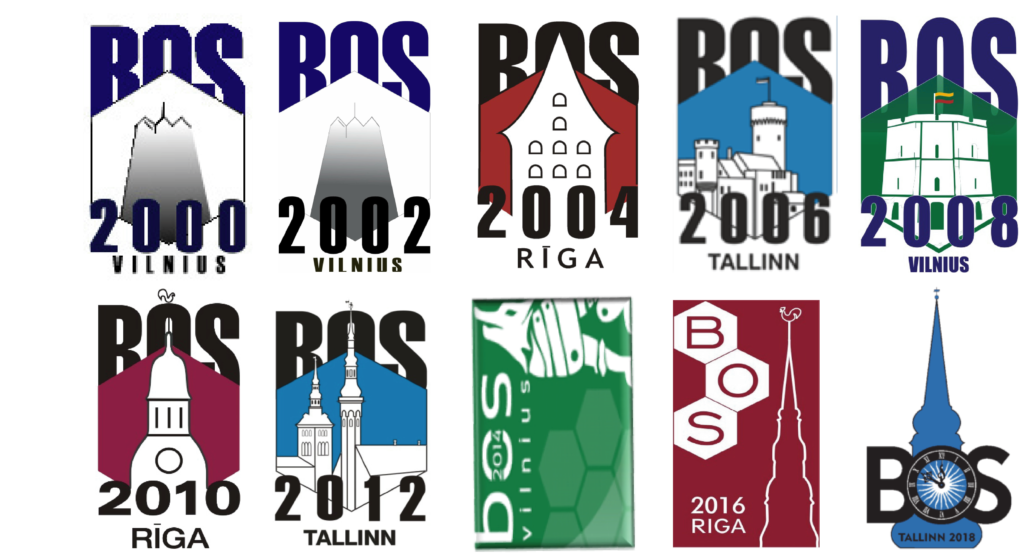Balticum Organicum Syntheticum (BOS) has become an internationally recognized organic chemistry conference, held biennially in the capitals of the Baltic States of Estonia, Latvia, and Lithuania. In 2022, BOS will celebrate its 20th anniversary conference in the city where it all began two decades ago–Vilnius, Lithuania.
After nearly twenty years, the excitement of sharing chemical discoveries by the international community at BOS remains ever so strong. Since its inception, the BOS conference programme and format consists of 1) plenary lectures by distinguished international speakers and three Baltic speakers and 2) poster sessions held in a most congenial and discussion-stimulating atmosphere. BOS2022 will also include 15 min short talks by younger scientists. The BOS conferences are renowned for their balance of academic and industrial talks, presenting the fundamental and practical aspects of organic chemistry.

Vilnius
Vilnius is the capital and the largest city of Lithuania with a population over 0.5 million. The city is considered to be the economic center of the country and is one of the largest financial hubs for the Baltic States. The first known written record of Vilnius as the Lithuanian capital is found in the letters of Lithuania’s ruler, Archduke Gediminas, in 1323.
The historical medieval section of Vilnius, known as Old Town, is amongst the largest in Eastern and Central Europe covering 360 ha. In 1994, it was globally acknowledged as a UNESCO World Heritage Site. From the 14th to the 18th centuries, the city had a huge influence on the architectural development throughout the neighboring region. The city boasts a well-preserved example of a medieval street network and urban architecture consisting of Gothic, Renaissance, Baroque and Classicism styles. It is surprising how far north the Italian Renaissance and Baroque styles reached and how these styles look very much at home amidst other buildings containing Russian Byzantine or Jewish elements, or even dwelling houses with motifs dating back to the pre-Christian era. In the year 2009, Vilnius was the European Union’s Capital of Culture.

Lithuania’s Millenium

Historically Lithuania was always a bridge between East and West. Its geographical location never let Lithuania distance itself culturally far from Europe proper. It sits at the juncture of three cultural zones – Central, Northern and Eastern Europe. In 1989, Jean-George Affholder, a scientist at the Institut Géographique National (French National Geographic Institute) calculated that the geographical/gravitational center of all of Europe is located just 26 kilometers north of Vilnius in Lithuania.
In the year 2009 Lithuania celebrated its first millennium as a nation. The first mention of its name in written western records appears in the Annals of Quedlinburg (Germany) of the 11th century where a short entry devoted to Lithuania reads: “In the year 1009, St. Bruno, archbishop and monk, in the eleventh year of his conversion, was beheaded by pagans at the Russian and Lithuanian border and went to heaven together with 18 of his followers on the 19th of March”.
Lithuania and Poland formed a Commonwealth in 1559. Initially, it was successful in deterring enemies. By the 17th century, Poland-Lithuania was weakened due to a unique yet hard-to-manage political system of “Noble Democracy” where a consensus was a prerequisite for any important decision. The Commonwealth lost its power and in the late 18th century (1772-1795) it was completely partitioned and annexed by Prussia, Austria, and Russia with most of Lithuanian lands falling under the Russian rule.
The Russians banned the Lithuanian language and suppressed Catholicism. There were two unsuccessful revolts (1831 and 1863) and the restoration of statehood finally became possible after the Russian Empire crumbled and the Germans surrendered in World War 1.
Limited industrial revolution and urbanization took place in the late 19th century. The period of freedom and prosperity from 1918 to 1940 was cut short by the World War 2. Lithuania was occupied by the Nazi Germany and twice by the Soviet Union. The Soviet occupation lasted until 1990. During this era, hundreds of thousands of people, including the intellectual elite, were murdered, tortured or expelled to Siberia. This has left deep economical, psychological, and spiritual scars on the Lithuanian nation.
The massive independence movement known as “Sąjūdis” (established 1988) made it clear that not even the almighty Soviet machine was able to suppress the Lithuanian will for freedom. On March 11, 1990, Lithuania became the first Soviet-controlled country to restore independence despite subsequent Soviet aggression in 1991. In the 1990s Lithuania adopted a free market economy and experienced massive economic growth. However, the stagnation experienced during the Soviet years left Lithuania’s economy decades behind that of the West. Lithuania joined the European Union in 2004.

In 2018 Lithuania celebrated the centenary of the restoration of its independence. Though it represents but a tiny fraction of its long and illustrious history, it is of important historical significance. The Declaration of Independence signed in 1918 marked a monumental achievement by a people of a small country with a rich and ancient history who were determined to take back contol of their country‘s own destiny.

